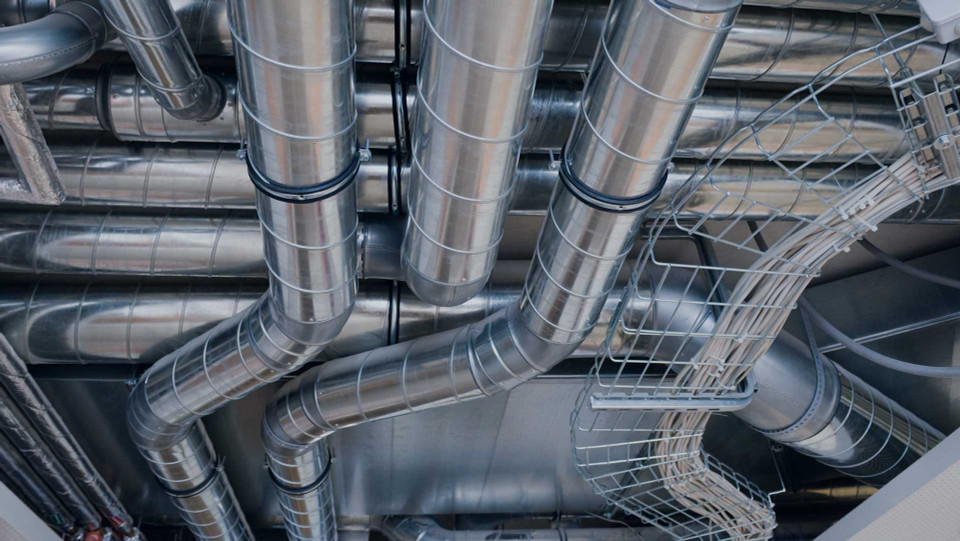Ventilation System Testing
Your ventilation system consists of air movers and a single duct or multiplex of ducts delivering airflow to spaces throughout the building. Local exhaust ventilation systems are critical to filtering dust that comes from grinding operations, soldering, and localized tasks. These systems must be maintained on a regular basis in order to do the job that they were intended to do. Can you imagine a worker grinding beryllium without the local exhaust system being able to capture the dust particles because the fan motor was failing? How about an office environment with rooms that are cut off from the air supply due to a duct blockage? Ventilation systems should be tested to verify volumetric flow rates initially following the design phase and then periodically after that.
Volumetric Flow Rate
Volumetric flow rate at cubic feet per minute (cfm) is obtained by measuring the duct velocity and the duct cross-sectional area, cfm = velocity x area. One of the oldest and best ways to measure velocity in a duct is a Pitot tube traverse. The velocity in feet per minute (fpm) is equal to 1096(VP/air density)1/2.
The Pitot Tube
The Pitot tube was developed by Henri Pitot in 1734. It needs no calibration, and the velocity pressure readings are +/- 1% at velocities above 2000 fpm. The construction consists of two concentric tubes; one measures the total pressure, the other the static pressure. When both tubes are connected to a differential manometer, the difference is the velocity pressure.
Taking readings with a Pitot Tube
The air flow in any cross section of duct is not uniform.In some cases, it’s even turbulent. The readings should be taken a distance away from any turbulence caused by bends or obstructions and averaged together. Readings are taken horizontally and vertically and averaged together. The number of readings per traverse is based on the duct size, information that can be obtained from the ACGIH Industrial Ventilation publication. One can also refer to ASHRAE 111, “Practices for Measurement, Testing, Adjusting, and Balancing of Building Heating, Ventilation, Air-Conditioning, and Refrigeration Systems” and ISO 3966 standards. The use of a single centerline reading for obtaining average velocity is not recommended.
Dwyer Manometers and Pitot Tubes
EGas Depot can supply Dwyer manometers, Pitot tubes, thermo anemometers, and flow hoods for a variety of ventilation testing needs. Dwyer has a long history of innovation in designing and manufacturing measurement sensors that provide superior product performance. Shop online at www.egasdepot.com or call toll-free at (833) 386-9248.

